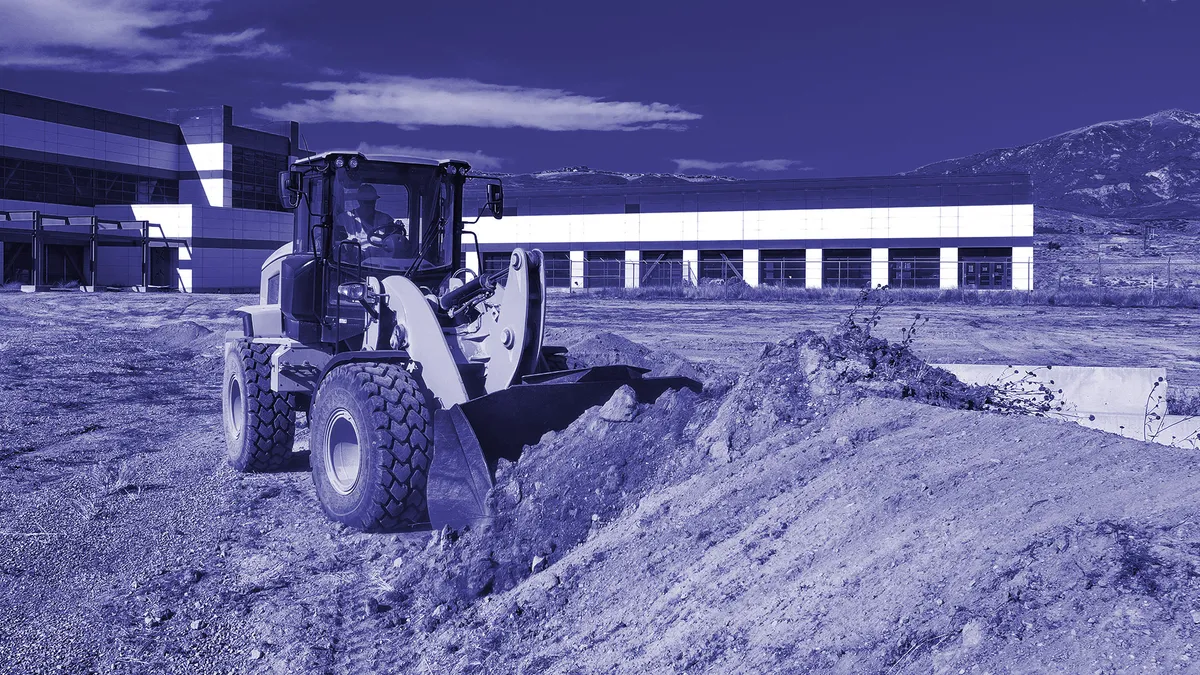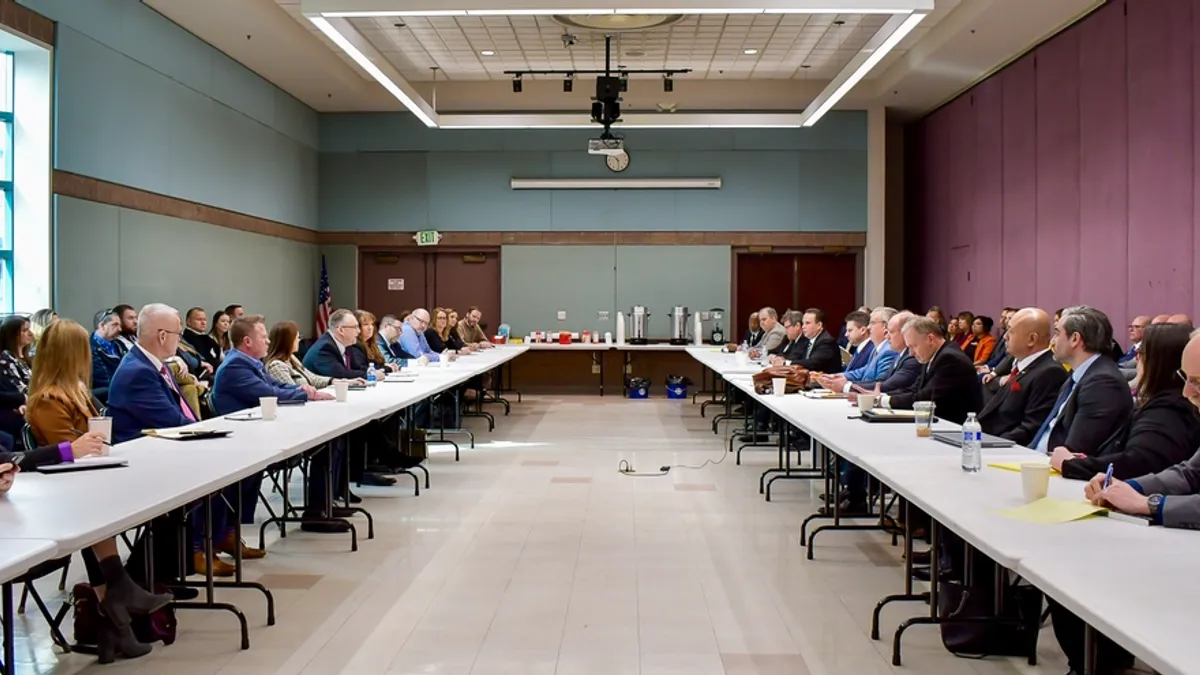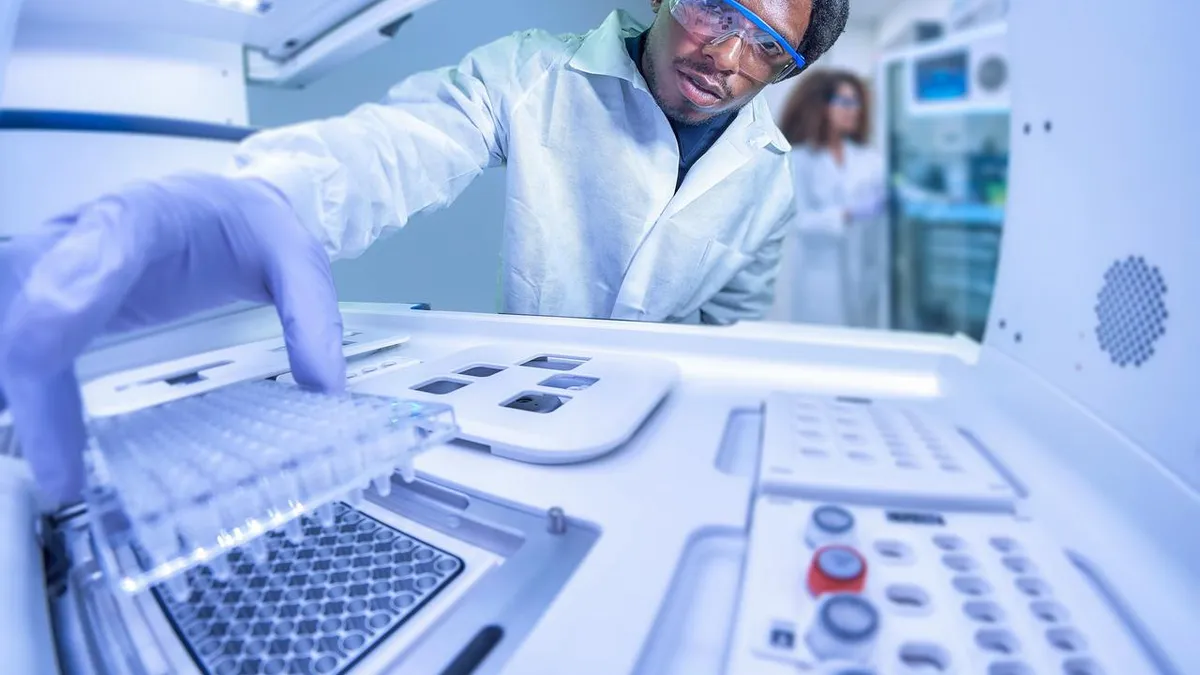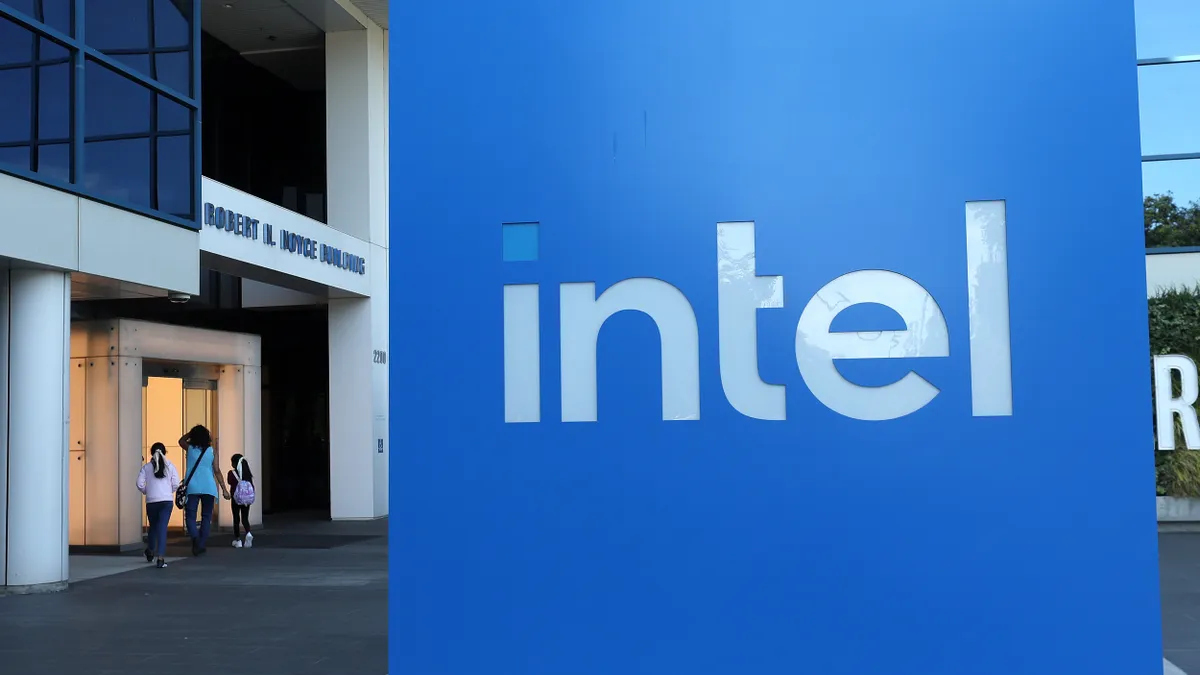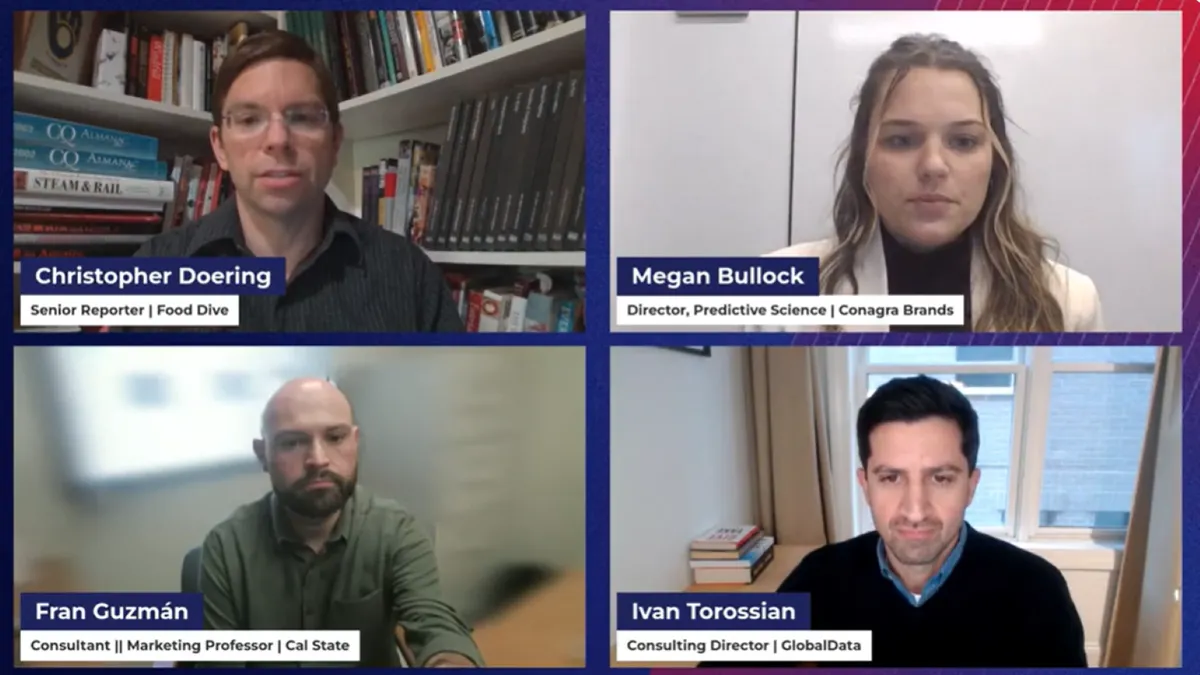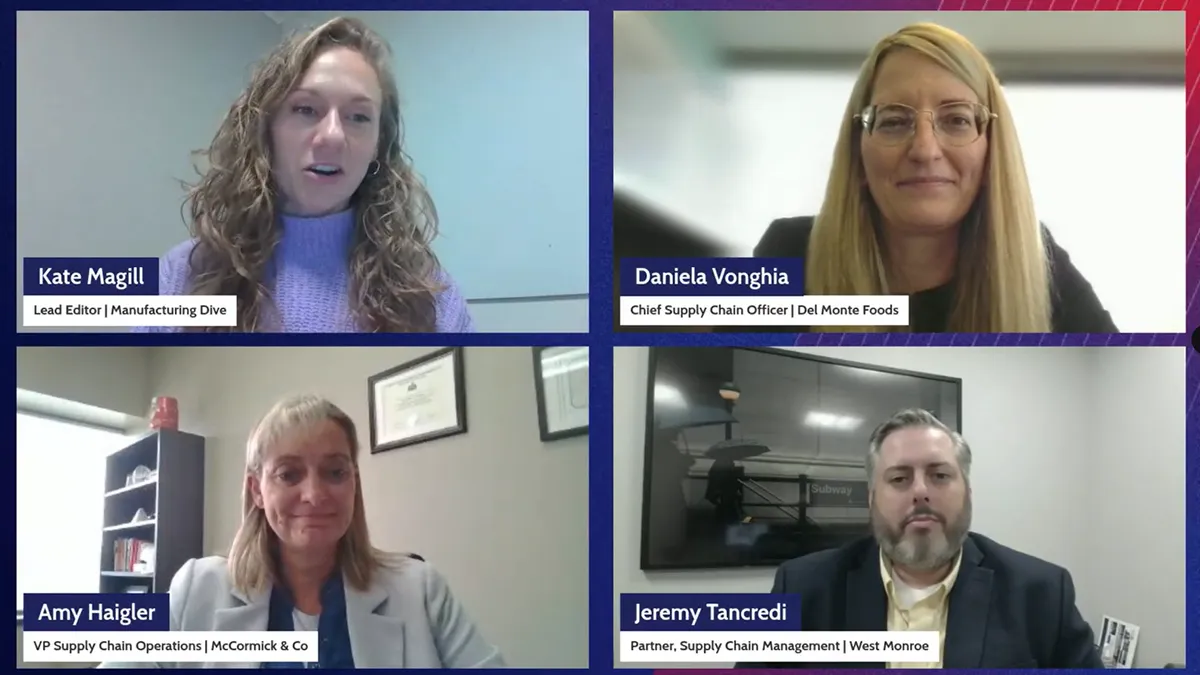The push to bring manufacturing back to the United States is unlike anything Didi Caldwell has seen in her career.
Private companies have spent more than half a trillion dollars since 2021 to onshore facilities back to the U.S., according to the White House. As long as labor shortages don’t derail that momentum, that record amount of manufacturing construction activity isn’t expected to slow down anytime soon.

“I haven’t seen in the last 25 years anything like this,” said Caldwell, president and CEO of Global Location Strategies, a Greenville, South Carolina-based business consulting and services firm for capital, labor, energy and water intensive manufacturers. “This is a once-in-a-lifetime or a once-in-a-century-type event that we’re experiencing.”
Even contractors beyond the megaproject scope stand to benefit, as historic spending spills over to other project types as well — such as warehouses, distribution centers and surrounding community infrastructure. That presents a lucrative opportunity for contractors not only involved in the megaprojects but also in the numerous ancillary projects required to support them.
Multibillion-dollar onshoring push
America’s onshoring effort accelerated after the COVID-19 pandemic hit in 2020. Millions of Americans suddenly working from home caused demand to soar for remote-friendly devices, including smartphones, laptops and other electronic products. The supply of chips powering those devices couldn’t keep up. That had a reverberating effect on other sectors, such as car manufacturers that could not source chips to build new vehicles.
But along with consumer uses, chips also have critical military applications and remain essential for national cybersecurity. Commerce Secretary Gina Raimondo labeled the chip shortage earlier this year a national security issue because it exposes the U.S.’s dependence on foreign chip importers.
Yet this recent recognition of the importance of domestic manufacturing capabilities goes much further back than the pandemic, said Caldwell.
While the Infrastructure Investment and Jobs Act, CHIPS and Science Act and Inflation Reduction Act have all bolstered domestic manufacturing construction activity, Caldwell points out the trend was already well underway when COVID-19 struck.
Onshoring effort accelerates after COVID-19 pandemic
“In my mind it was kind of like throwing gasoline on the fire,” said Caldwell regarding the Biden administration’s push to support manufacturing projects. “We were already seeing a huge uptick, especially in these capital-intensive projects.”
How energy played a role
Previous economic shocks had already exposed the vulnerability of global supply chains.
Disruptions due to events like the oil embargo in the 1970s, the 2009 typhoon season in Taiwan or the 2011 earthquake in Japan highlighted the risk of offshoring manufacturing operations for U.S. companies.
More importantly, the transformation of the U.S. energy sector, largely due to massive hydraulic fracking in the early 2000s, proved a pivotal development in sparking the ambition to eventually bring manufacturing back to the U.S. mainland.
“The thing that really changed, and this might be as impactful as anything, is that we went from a net energy importer to a net energy exporter,” said Caldwell. “I spent the first half of my career moving companies outside of the U.S., particularly energy-intensive companies. For the last 10 or 15 years, I’ve been moving them back in.”
Megaprojects spark further boom
But while public funding receives the lion’s share of attention for the new plants being built, it is also a major catalyst for additional private investments by third-party businesses that support or act as vendors to these facilities, said Robert Hess, practice leader and senior principal at Newmark, a New York City-based commercial real estate advisory firm. He points to megaprojects across the country such as TSMC’s $40 billion plant in Phoenix, Micron’s $100 billion investment near Syracuse, New York, or Texas Instruments’ $11 billion semiconductor plant in Lehi, Utah, as key drivers of further private investment.
Federal financial incentives boost funding for onshoring projects
For instance, TSMC’s plant in Phoenix sparked about 28 related project expansions to the region, said Chris Camacho, president and CEO of the Greater Phoenix Economic Council.
“From materials and equipment manufacturers to logistics and services that complete the semiconductor pipeline, these companies benefit from the market’s supportive infrastructure, talented workforce and pro-business environment,” said Camacho. “So far, these projects have created more than 5,700 jobs and in the immediate areas around these larger developments, this growth certainly impacts local enterprises and community services.”
The ‘halo effect’
That ancillary effect impacts numerous companies that support these huge manufacturing processes, said Mark Baxa, president and CEO of the Council of Supply Chain Management Professionals, a Lombard, Illinois-based association for supply chain professionals. In other words, by the time a piece of raw silicon makes its way into a finished product, it likely has crossed as many as 40 different locations, according to a CSCMP report.

One example includes the recent groundbreaking of the Cherokee Commerce Center 85 near Gaffney, South Carolina. Glenstar Logistics, a Chicago-based commercial real estate company, and its capital partner, Creek Lane Capital, designed the facility to meet the rising demand of multibillion-dollar manufacturing projects in the surrounding area. As the volume of those megaprojects skyrocket, the need for efficient warehouse and logistics sites become increasingly evident, said Brian Netzky, principal of Glenstar Logistics.
“The rapid increase in the number of electric vehicle, battery and manufacturing factories in the Southeast makes it critical for warehouse and logistics businesses to expand and expedite delivery capabilities to quickly ship parts and materials to these manufacturers,” said Netzky. “Modern facilities with high clear heights, abundant dock doors and trailer parking are essential for these factories to be successful in fulfilling their contracts.”
For that reason, historic public funding will not only stimulate construction of new plants but also lead to retooling and refurbishment of existing facilities in surrounding areas, said Stuart Eisler, partner at Hanson Bridgett, a San Francisco-based law firm.
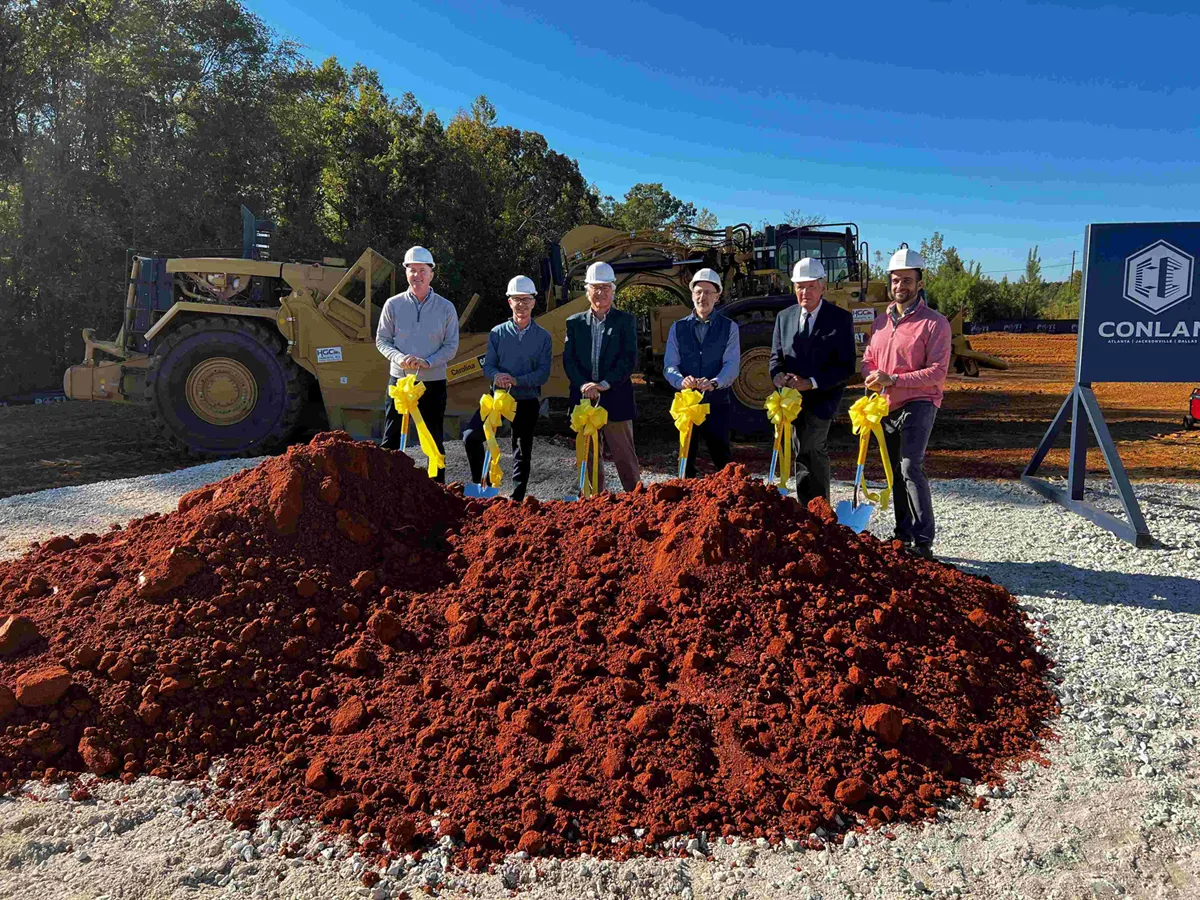
“Instead of only focusing on insular large-scale facilities and far-reaching distribution channels, the industry will be interested in identifying regional centers, potentially near research hubs, that can support local development needs,” said Eisler. “State and local governmental entities may also get in the game to sweeten the pot and bring the work within their jurisdiction, further incentivizing private construction and the ancillary industry partners to build and upgrade operations.”
Hess agrees that the onshoring boom is fueling further construction spending outside of just on plants themselves.
“There is not only the initial opportunity in constructing a new manufacturing facility, there is a larger halo effect among upstream and downstream suppliers, logistics firms, retailers and wholesalers, ecommerce operations and housing providers,” said Hess. “The economic multiplier is quite high.”
He expects scores of primary and second-tier suppliers and services to be built as a result of just one megaproject.
“As companies move through phases of research and development, from pilot plants to mass production, there are a whole host of opportunities to unlock private capital that supports manufacturing space,” said Hess. “Many of the EV suppliers in play right now have several equity partners involved in Series A and Series B raises, in addition to capital from private equity and even pension funds.”
Finding secondary opportunities
Since public funding predominantly focuses on megafactory manufacturing processes, this leads to a corresponding lack of attention toward secondary investments and projects surrounding these plants, according to the CSCMP report.
For that reason, savvy construction firms are closely following manufacturing-related conferences and events in order to win these types of offshoot jobs, said Hess. Many general contractors are already increasing their presence at events within the battery, chip and broader industrial space to target these companies directly, he added.

Firms eager to win projects spurred by manufacturing spending should “work the relationships hard” at these events in order to get on lists for vendor selection, he said.
Examples of these conferences to follow include those held by Benchmark Mineral Intelligence, a strategic advisory in the energy transition space; NAATBatt, a consortium of energy storage and battery firms; and the National Association of Manufacturers. Hess recommends exploring other forums held in different regions around the world, as well.
“The EV industry is a good example,” said Hess. “Many of the new technologies and emerging substitute materials that supply the battery development process are vetted at these gatherings.”
Building the factory floor
But for contractors looking to cash in on the meat-and-potatoes of the onshoring boom — the factories themselves – there are ways to parlay past expertise into the knowledge base necessary to build these plants.
General contractors looking to get into this line of work need to invest in their people and the education necessary to shift from other project types to these specialized facilities, said Eisler.
“Nimble contractors ready to take on these challenges and invest in their people and institutional infrastructure should be able to reap the rewards from what may well be a burgeoning domestic market for years to come,” said Eisler.
For this reason, Reston, Virginia-based contractor Bechtel references its global supply chain network as an important selling point to customers in the battery and semiconductor sectors. The contractor is seeing a construction boom for semiconductor fabs, battery factories and electrical vehicle charging infrastructure.
For instance, Intel selected Bechtel to complete phase 1 of its $20 billion semiconductor facility in Licking County, Ohio. The contractor also recently opened a new office in Chandler, Arizona, in order to expand its manufacturing and technology business.
“Over the past 20 years, Bechtel has averaged $18 billion per year in material purchases, giving us the largest supply database in the industry for construction materials,” said Brad Bucher, a Bechtel spokesperson. “We understand industrial projects with different chemistries and lots of piping. That translates well to the battery tech and semiconductor spaces.”
Beyond that type of pivot, Eisler added that general contractors will need to become fluent in the terms and considerations likely to be found in the performance standards of the RFPs for these megaprojects, to allow them to successfully bid for the work.

“I also expect that many of these projects will rely on alternative project delivery methods,” said Eisler. “Contractors would be wise to line up legal counsel who are known to operate in the areas such as integrated project delivery, progressive and standard design-build, CMAR, P3 or multi-prime space.”
Location matters
Important factors driving geographical growth trends in manufacturing include availability of land, lower-cost power, logistics infrastructure, a favorable business environment and a supportive labor ecosystem, according to a sector report from Newmark.
Arizona and Texas lead in manufacturing investment, totaling around $120 billion from 2020 to the second quarter of 2023, according to Newmark. But Texas, Georgia and North Carolina lead the U.S. in sheer numbers of major manufacturing announcements, with more than 20 investments of $100 million or more since 2020, according to the report.
Construction firms can look for emergent markets where manufacturing projects are taking root, as these areas will become more important in tandem with supply chain shifts as projects get up and running, said Hess.
President Joe Biden signed the $52 billion CHIPS and Science Act in August 2022. Since then, private company investment in American manufacturing has reached $614 billion, according to the White House.
“The CHIPS Act signifies an important start in the way of progress, and the earmarking of $500 million for smaller scale semiconductor supply chain projects and business that was announced is a needed focus,” said Hess. “But much more investment, especially in workforce development, will be needed, hence an increasing amount of new funding models developing within the private sector.”



